Traveling is one of the most beautiful things in the world, filling your heart with emotions and your memory with unforgettable moments. Exploring to discover and live new experiences adds meaningful content to your life. For this reason, the Salkantay Trek Peru is the best journey for an unforgettable adventure.
This is a fantastic route located in Cusco that you can’t wait to experience. The Salkantay Trek to Machu Picchu is a trekking trail that leads you to Machu Picchu, a wonderful destination. It is also one of the most visited by lovers of this activity. The Salkantay hike offers a unique and unforgettable experience for those seeking adventure. Its stunning landscapes, abundant flora, and fauna are reasons to embark on this incredible adventure along the Salkantay Trail in Peru.
Where is the Salkantay Trek Peru located?
Salkantay Trek is a route that crosses the mountains and valleys of the provinces of Anta and Quillabamba in the Cusco region. The altitude of this route ranges between 5,906 feet (1,800 meters) and 15,000 feet (4,572 meters) above sea level. The total distance of the trek is approximately 45 miles (72 kilometers) starting from the city of Cusco.
Characteristics of the Salkantay Trek Peru
| SALKANTAY TREK | |
Maximum altitude |
15,000 feet (4,572 meters) |
Hiking distance |
35 miles (57 kilometers) |
Hiking difficulty level |
Moderate to difficult |
Minimum temperature |
0 °C |
Maximum temperature |
24 °C |
What are the stages of the Salkantay Trek Peru route?
|
Stages of the Salkantay Trek Cusco route |
|||
| Stages | Distance | Difficulty | |
| Day 1 |
CUSCO – MOLLEPATA – SORAYPAMPA – HUMANTAY
|
7.45 miles (12 kilometers) |
Challenging |
| Day 2 | SORAYPAMPA – CHALLWAY
|
13.7 miles (22 kilometers)
|
Formidable (Highest point of the trek). |
| Day 3 | CHALLWAY – LA PLAYA – LUCMABAMBA
|
11.19 miles (18 kilometers) | Moderate |
| Day 4 | LUCMABAMBA – LLAPTAPATA -HIDROELECTRICA – AGUAS CALIENTES
|
10.6 miles (17 kilometers) | Light |
| Day 5 | AGUAS CALIENTES – MACHU PICCHU – CUSCO
|
Easy | |
Informative video about the Salkantay Trek Peru route:
Discover the 5 best natural attractions of Salkantay Trek Peru
1.- The main snow-capped mountains!
Humantay Snow-capped Mountain
The Humantay Snow-capped Mountain is the first peak on the Salkantay Trek Cusco route. This beautiful mountain is located in the district of Mollepata, in the province of Anta. Humantay is a Quechua word that translates to “Sacred Head” in Spanish, and it truly is a sacred summit, showcasing its purity and beauty. The Humantay Snow-capped Mountain stands at an altitude of 19,521 feet (5,473 meters). This mountain has a lagoon of the same name. Each year, thousands of tourists visit this beautiful attraction to enjoy its surrounding environment.
The Salkantay Trek to Machu Picchu often includes a visit to Humantay Lake, making it a highlight for trekkers exploring the Salkantay Trail. Its proximity to Salkantay Peru enhances its appeal as a must-see destination during this remarkable adventure. The Salkantay hike provides an unforgettable journey to some of the most stunning landscapes in the region.
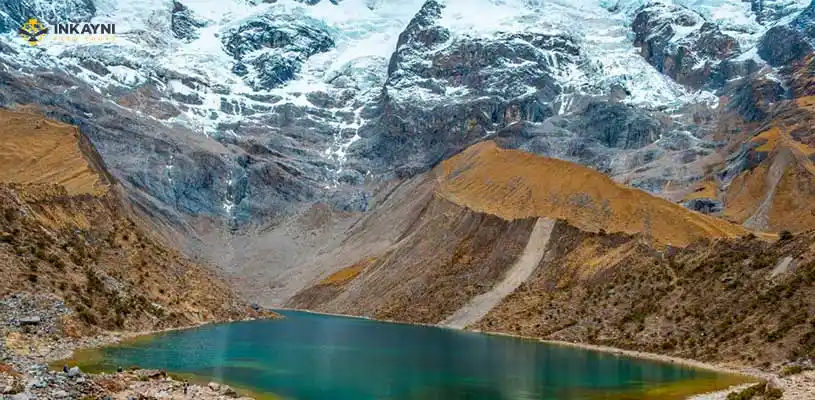
Salkantay Snow-capped Mountain
During the Inca era, the great Salkantay Snow-capped Mountain was a sacred entity. Inca priests used to pay tribute by offering rich offerings in magical ceremonies. During the ceremony, the priest began the ritual by thanking the great mountain for the protection and water it provided to the towns; then, he would pray for continued prosperity in all the Ayllus of the Tawantinsuyo. In these rituals, the priest used sacred elements such as chicha, coca leaves, and camelid meat to carry out the magnificent offering.
Chronicles from writers like Guamán Poma de Ayala (1615) mention the sacrifice of children as offerings to the great mountain. These human sacrifices had to meet certain characteristics, such as being children without physical imperfections. The burials were accompanied by statuettes of both humans and animals. Today, evidence of these burials can be found in the snow-capped mountains of Peru (Ampato), Argentina (Aconcagua), and Chile (El Plomo), supporting the hypotheses of many chroniclers.
Today, the majestic Salkantay Snow-capped Mountain, a key part of the Salkantay Trek Peru, continues to provide its crystal-clear waters that flow through rocky channels, enriching the experience of the Salkantay Trail and reaching the depths of warm valleys. Located in the great Vilcabamba mountain range (Cusco-Apurímac). Salkantay is the largest and most important peak in the range, standing at an altitude of 20,551 feet (6,264 meters). This peak is also accompanied by other beautiful smaller snow-capped mountains, including Humantay, Yanantay, and Tokorhuay.

2.- Discover the Lush Flora of Salkantay Trek
On the Salkantay Trek Cusco trail, the flora is a treasure we must protect and preserve, as it is present throughout the journey. Peru is renowned for its rich biodiversity, and in Cusco, you’ll find endemic plants worth discovering. Many plants are used in medicine and construction.
What are the most common shrubs on the Salkantay Trek route in Cusco?
| Common Name | Scientific Name | Characteristics |
Uses |
|
| Medicine | Other | |||
Molle |
|
|
|
|
Chachacomo |
Escalonia resinosa |
|
|
|
Q’euña |
Polylepis incana |
|
|
|
Kantu |
Cantua buxifolia |
|
|
|
What Shrubs Can You Find on the Salkantay Trek?
|
Shrubs on the Salkantay Trek Route Cusco |
||
| Common Name | Scientific Name |
|
Roque |
Colletia spinosissima |
|
Lloque |
Kageneckia lanceolata |
|
Niwa |
Cortaderia nítida |
|
Mutuy |
Senna birostris |
|
Muña |
Minthostachys spicata |
|
Markhu |
Ambrosia arborescens |
|
Chilca |
Baccharis latifoli |
|
Llaulli |
Barnadesia horrida |
|
Achupalla |
Puya ferrugínea |
|
What Are the Most Common Native Trees on the Salkantay Trek Cusco Route?
| Tree Species | |||
| Common Name | Scientific Name | Characteristics | Traditional and Medicinal Uses |
Aliso, Lambrán |
Alnus acuminata |
|
|
Intimpa |
Podocarpus glomeratus |
|
|
|
Quiswar |
Buddleja incana |
|
|
Sauco |
Sambucus peruviana |
|
|
3.- Experience the diversity of wildlife in Salkantay Trek Cusco
In the ravines, valleys, and mountains, animals are the main inhabitants. They observe visitors with fear, so we must walk carefully, respecting and protecting the wildlife that complements the landscape. These breathtaking areas are often explored along the Salkantay Trek Peru, where the Salkantay Trail showcases the harmonious coexistence of nature and adventure in Salkantay Peru.
What animals can be seen along the Salkantay Trek Cusco route?
Andean Bear
The Andean bear is the only bear species in South America, primarily found in Peru, especially in Cusco. This species is typically found in humid forests at altitudes between 1990 and 2350 meters above sea level. The bear is named for the white patches around its eyes. Its diet is varied; although classified as a carnivore, it has a herbivorous/frugivorous/omnivorous diet. The Andean bear may occasionally include animals like rodents, ants, and rabbits in its diet.
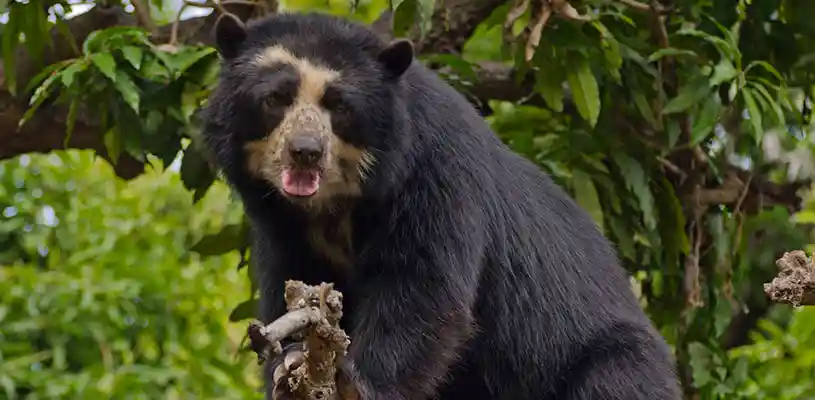
Condor
For a long time, the condor has been an inspiration for the Andean people. This animal was once the messenger of the gods and is very present in the popular traditions of many communities. Stories, myths, and legends are some of the expressions in which the condor is featured.
The Incas considered the condor an immortal animal, a messenger that communicated with the outer world or Jananpacha. This animal is depicted in the ceramics and sculptures of many pre-Hispanic cultures.
During colonial times, the condor appeared in the bullfights of many towns in the Andes; in these festivities, the condor represented the people, and the bull represented colonialism. In the arena, the condor was tied to the back of the bull. The bull, goaded by the bullfighter, would leap with the condor on its back, suffering the enormous talons of the giant bird. The people enjoyed these events. In these celebrations, the death of the bull meant the victory of the people, and the death of the condor meant misfortune.
Today, in regions like Salkantay Peru, traditions surrounding the condor are still alive, offering cultural depth to journeys like the Salkantay Trek Peru, where the Salkantay Trail brings visitors closer to the myths and legends of the Andes.
This magnificent animal lives in mountainous areas throughout the Andes; it nests on rocky cliffs, usually at several meters above the ground. The condor is a scavenger, feeding on dead animals such as cows, horses, goats, etc. This animal can measure over three meters and has enormous wings that allow it to fly great distances.
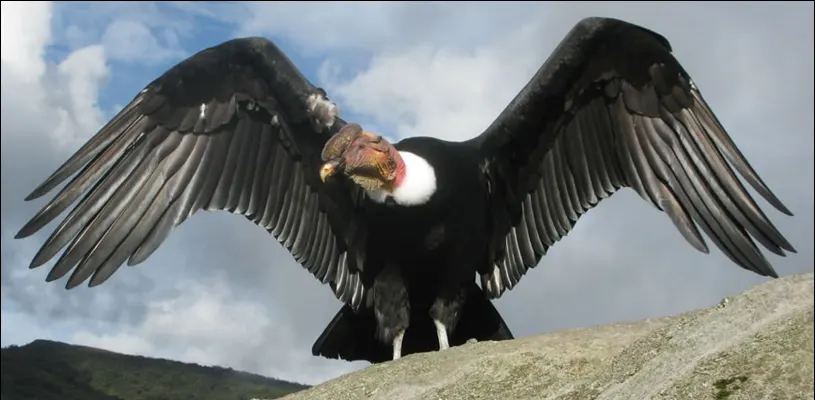
Vizcacha
This friendly animal inhabits the Andes mountain range, including countries such as Chile, Argentina, Peru, and Bolivia. Its habitat consists of arid, rugged, and rocky areas where rocks provide space for sunbathing and shelter.
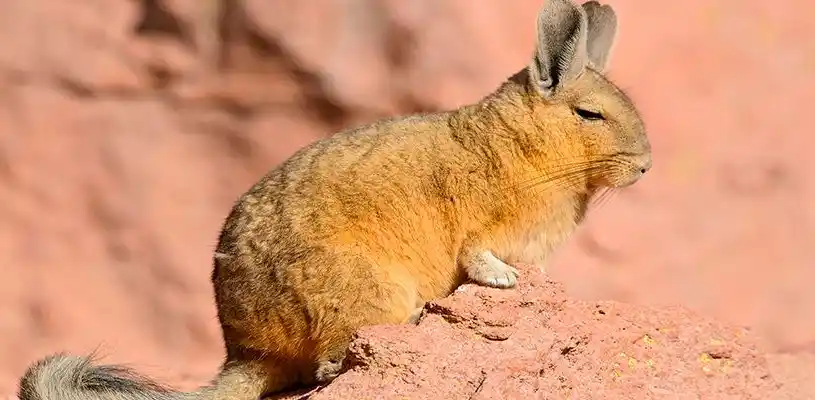
Chinchilla
The Chinchilla is a small mammal that inhabits the southern half of the Andes, its habitat is located in dry shrubland environments as well as in the foothills of the Andes. It is a herbivorous animal highly valued for its soft and dense fur, feeding primarily on fibrous foods with low energy value.
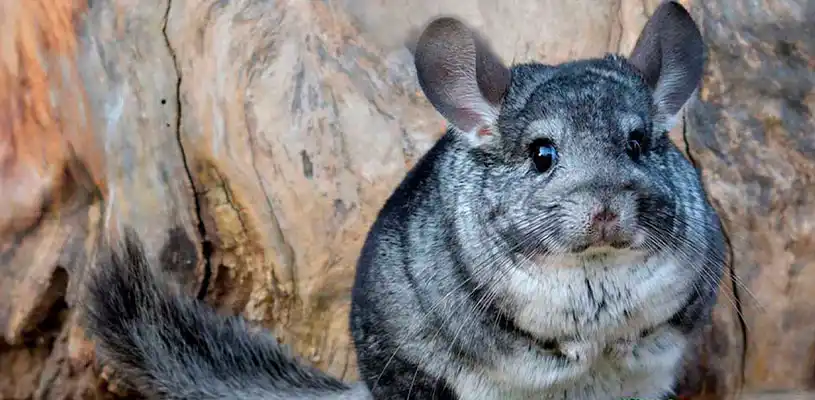
Llama
In the 14th century, during the Inca period, the llama was used as an offering in important religious ceremonies. It was also valued for its wool and meat, which contained high nutritional value. Transportation was a function that these sacred animals fulfilled, able to carry light loads of between 20 and 34 kilograms. Along the Salkantay Trek to Machu Picchu, trekkers can experience the same natural landscapes that the Incas once traveled, while embarking on a Salkantay hike that takes them through breathtaking scenery and ancient traditions.
The llama inhabits various environments, at elevations ranging between 2300-4000 meters above sea level (msnm). Its diet consists of different types of plants. During your journey, you will see llamas in the Machu Picchu National Sanctuary.

Alpaca
The alpaca has inhabited the Andes for thousands of years, and this animal is raised by many communities living in the Andean region.
The Incas valued the alpaca because it provided wool and meat. Alpaca wool is soft, warm, and durable. The fiber has been used to make high-quality clothing and textiles for centuries. Alpaca wool is softer than sheep wool, comparable to the quality of cashmere. Additionally, alpaca fiber is lightweight, making it ideal for clothing that needs to be both comfortable and warm.
The fiber of alpaca wool had great importance because it was used as currency, and owning alpaca wool symbolized wealth and status.
The alpaca is a herbivorous animal, its diet consists of grass and hay, supplemented with stems, leaves, and the bark of certain plant species. Socially, alpacas are peaceful and sociable animals, making them easy to raise and manage.
Alpacas today are primarily distributed in the Andean region of South America, in countries such as Peru, Bolivia, Chile, and Argentina. However, due to their high-quality wool, the demand for alpaca products has expanded globally, increasing the economic importance of these creatures.

4.- Enjoy the Salkantay Trek Cusco Landscape
The landscape on the Salkantay Trek to Machu Picchu is the view that accompanies your journey, delighting your senses as you enjoy the shapes, smells, and flavors present in nature. The most notable feature of the Cusco landscape is the stunning Andes mountain range, which stretches across the entire region. Exploring the Salkantay Trail allows you to fully experience the beauty and majesty of Salkantay Peru.
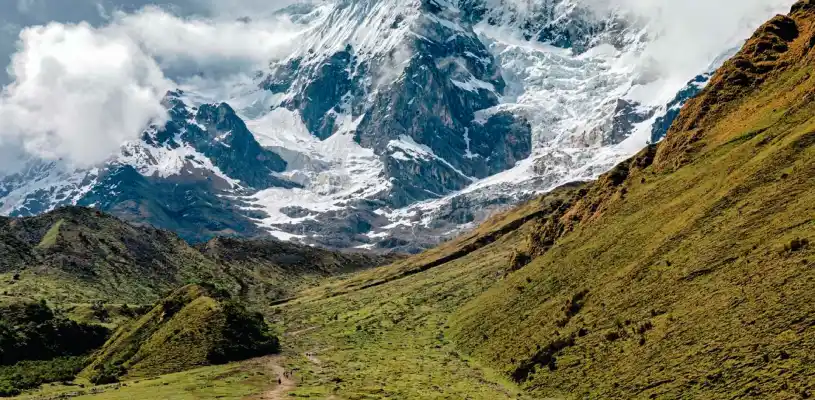
5.- Visit the Turquoise Humantay Lake
Taking a beautiful photo, feeling the water, and enjoying the scenery are activities to do at the stunning Humantay Lake. This charming lake lies at the foot of the Humantay Peak, measuring 618 meters long and 164 meters wide. The turquoise color is due to the presence of algae inside the lake. The Salkantay Trek Peru offers an incredible opportunity to explore the Salkantay Trail, where you can experience the breathtaking beauty of Salkantay Peru, making it a perfect addition to any adventure.

RECOMMENDATIONS:
If you plan to explore the Salkantay Trek Cusco route, having a well-planned trip is very important. A well-organized trip allows you to enjoy your adventure to the fullest, without worries. For this reason, we recommend hiring the services of a travel agency. If you’d like to learn more about us, you can visit our main page:www.inkayniperutours.com.
RELATED ARTICLES ABOUT SALKANTAY TREK CUSCO
- GENERAL INFORMATION ABOUT LAGUNA HUMANTAY
- LAGUNA HUMANTAY FULL DAY
- ACCLIMATIZATION FOR LAGUNA HUMANTAY
The Salkantay Trek route in Cusco is an unforgettable experience for those seeking a challenging adventure and a deeper connection with nature. The flora and fauna, as well as the snow-capped peaks, make this hike one of the best options for those who wish to explore the Peruvian Andes.
“Whether today or tomorrow, return to Nature”






